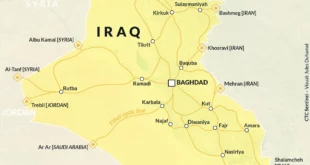OCCUPIED JERUSALEM — As Israeli soldiers dragged Jewish settlers from their homes, one settler walked in front of about a dozen television cameras and wailed: “How could they do this? This the land of Israel.†When the cameras were turned off, he stopped crying and walked away.
Another family invited a television crew into their homes and then insisted that soldiers drag them out.
There’s no question that settlers were genuinely grieving over the loss of their homes, their livelihood and their dreams. But they were also keenly aware that their struggle was being broadcast across the world, showing how difficult it is for the Jewish state to pull settlers from occupied land.
“The [settlers’] goal was to create a legacy, a trauma that was so big… that no Israeli government would dare to do something similar in the future,†said Nahum Barnea, a columnist for the Yediot Ahronot newspaper.
And that goal may, along with intense media coverage, have dovetailed with the aims of Israeli Prime Minister Ariel Sharon, who has said that Israel will not consider pulling the bulk of its settlers from the West Bank, the heartland of biblical Israel, despite pressure from Washington to evacuate more settlements.
“The political decision to let the media in was to get every favourable point in world public opinion,†said veteran military correspondent Ron Ben Yishai. “The reason was to show the world, look how it is when we have to evict… people from Gaza… . Try to imagine what will happen if you try to evict all the settlements in Judea and Samaria,†he added using the biblical names for the West Bank.
The Israeli army, which sometimes limits press coverage of military operations, let more than 500 journalists — one for every three settler families — into Gaza to cover the withdrawal, even providing shuttle buses and refreshments.
Journalists were in almost every settler home, embedded with military units and broadcasting live from synagogues as the army dragged settlers out of houses of worship.
“Every side, the Palestinians, the Israelis, the settlers all know the media is the most dominant tool to achieve your goals and they use it,†said Maj. Sharon Feingold, a spokeswoman for the Israeli army.
In the months leading up to the pullout, there was a sharp dispute in the army over how to handle media coverage. Some senior commanders favoured limiting access for fear that the media would get in the way of soldiers. In the end, the chief of staff, Lt. Gen. Dan Halutz, intervened and allowed free access.
The army apparently felt that it would be impossible to block the press and was also keen to show the world — and Israelis at home — that it was sensitive to the settlers, an image far different from what the world was used to seeing of an army that has just spent years violently cracking down on Palestinian protesters.
Police trained for a year for the mission and rarely used force, even when settlers taunted them and drenched them with paint. Many soldiers were visibly moved by the settlers and several could be seen breaking in tears as they were forced to pull settlers out of their homes.
“They trained the soldiers and policemen to be aware all the time,†Ben Yishai said. “It means how you look, not just what do you do.†Some of the settlers’ publicity offensive may have backfired. Some had dressed in Nazi concentration camp uniforms, wearing Stars of David on their clothing. Many Israelis were angered by the sight of settlers using Holocaust imagery and of photos of children being brought before the cameras and settlers attacking soldiers.
Sharon said the settlers’ plight initially moved him to tears, but he told the Haaretz daily that when he saw dozens of ultranationalist youths hurling bottles and pouring harmful substances on the soldiers “the pain turned to rage.†And the fact that the army completed the Gaza withdrawal in just a week may be an indication that the withdrawal was not as gut wrenching as many people had anticipated.
“Until now it was easier than expected,†Ben Yishai said. “I don’t think that the settlers succeeded in making it look like a national trauma.â€
 Eurasia Press & News
Eurasia Press & News


